

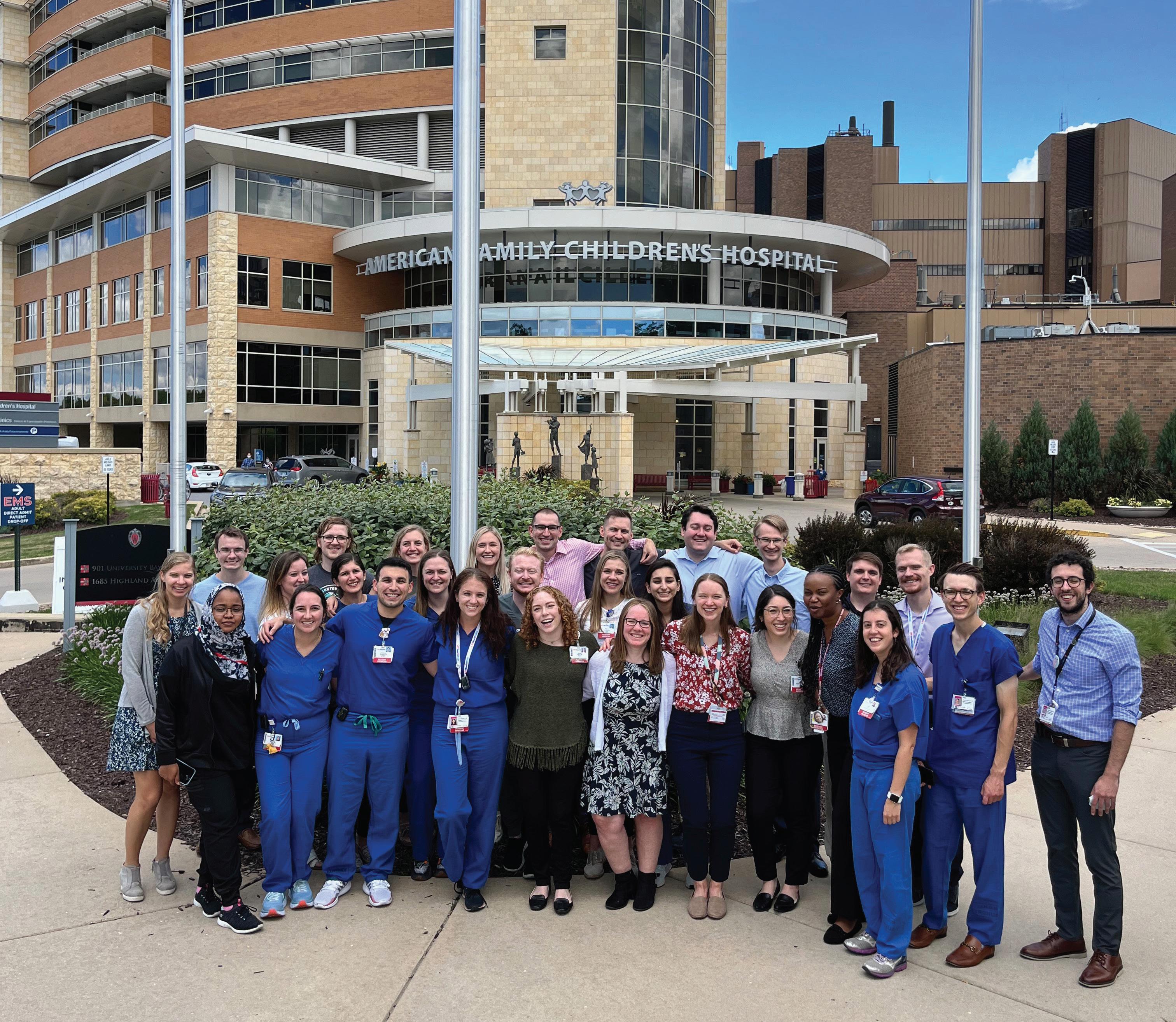
Pediatrics Residency Program 2024 Viewbook




Pediatrics Residency Program 2024 Viewbook
UW Health Kids includes all pediatric services and programs provided at our two main children’s hospitals, at our ambulatory sites and regional clinics in Wisconsin and Illinois.
Our Pediatric Cancer and Blood Disorders Program is part of UW Health | Carbone Cancer Center—a National Cancer Institute-designated Comprehensive Cancer Center.. Ranked as a top 50 program by U.S. News & World Report, we are leaders in cellular and gene therapy, neuro-oncology and novel clinical trials. We offer the latest treatments for leukemia, brain tumors and neuroblastoma.
Our Pediatric Heart Program is ranked among the nation’s top 50 pediatric cardiology and heart surgery programs by U.S. News & World Report. We are dedicated to the diagnosis, treatment and prevention of congenital and acquired heart conditions in neonates through young adults.
Learn more at uwhealth.org/kids
We offer a comprehensive neurosciences program that includes our Level IV Epilepsy Center with neurosurgical intervention services. Our nationally recognized experts provide the latest diagnostic and therapeutic options for the most complex neurological conditions. They pioneer the use of innovative techniques for spine tumors, spinal deformities and spinal trauma.
The UW Health Transplant Center is nationally respected and the only center in Wisconsin that is UNOS certified for pediatric heart, kidney, liver, lung and pancreas transplant.
Team
230+ pediatric physicians
80+ pediatric APPs
500+ pediatric RNs
75+ pediatric residents and fellows
41 specialty care programs
Research and education*
19th in nation for NIH funding
$55.86M external research funding
Locations
American Family Children’s Hospital, Madison, WI
Women and Children’s Hospital, Rockford, IL
34 primary care locations
3 urgent care centers
Regional services
130+ agreements
150+ providers
29 pediatric specialties providing onsite and remote services
45 locations in 27 cities
Med Flight air and ground critical care transport for children and neonates
*University of Wisconsin School of Medicine and Public Health, Department of Pediatrics
Our modern, world-class hospital is designed around the needs of children and families. It is home to some of the nation’s foremost experts in pediatric medicine. We care for all types of patients, including the sickest and most seriously injured infants, children and adolescents. Our pediatric patients from Wisconsin, Illinois and throughout the U.S. can expect remarkable patient-and family-centered care.
Fast facts
7 Days average length of stay 111 beds

Location 1675 Highland Ave. Madison, WI 53792
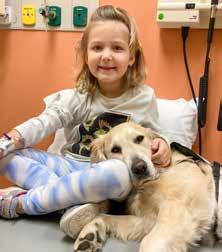

Key programs
Level I Pediatric Trauma Center
Level IV Neonatal Intensive Care Unit
Pediatric Intensive Care Unit
Verified Pediatric Burn Center
3,800+ inpatient admissions
8,600+ surgical procedures 18,000+ ED visits
8 operating rooms
Ambulatory Surgery Center
Hybrid Catheterization/Angioplasty
Suite with emphasis on no- or lowdose radiation
Epilepsy Monitoring Unit with neurosurgical intervention services for children with epilepsy
Pediatric Sedation Program
Day Treatment Center
Pediatric Emergency Department
Special support
24/7 Child Life services to help kids be kids while in the hospital
Hospital-based school, with a library, staffed by three Madison Metropolitan School District teachers
Positive Image Center for children experiencing anxiety from appearance-altering illnesses
Facility dogs who are trained to work in health care settings to support and uplift children receiving care
Family dinners and sibling childcare to ease stress on patients and families
Family kitchen, lounges, playrooms and an exercise room to provide patients and families with the comforts of home
Vacation: Three 1-week vacations per year plus one 5-day holiday break; 1 week leave after intern year
PGY-1 Call: 1-2 weekends/month (newborn follow-up care or assisting with ward rounds)
PGY-2 Call: Two call-free months and 1-2 weekends/month (NICU or ward nights)
PGY-3 Call: One call-free month and 1-2 weekends/month (NICU or ward nights)
Backup Call (PGY-2 and PGY-3 only): Primary backup coverage: provided by 2-week Swing Backup rotation. Secondary coverage: call assigned (but not necessarily used) 2-4x/month for residents on subspecialty/elective rotations.
2025-2026 ACADEMIC YEAR

Note: Vacations, holiday breaks, and post-internship break are not shown in these sample block schedules. Vacations generally occur during Elective, Emergency Medicine, GI, Endocrinology, and/or Cardiology blocks.
Continuity clinics occur weekly throughout the year except for on the following rotations: Ward Nights, Emergency Medicine, Heme/Onc Nights, and NICU and PICU (night weeks only)
Wards (Red, White, & Blue teams): Weekdays are generally 6 am to 6 pm. Call for the month includes working 4 weekend days.
Red: Care for hospitalist, nephrology, and cardiology patients
White: Care for hospitalist and GI patients
Blue (PGY-2): Care for pulmonary and endocrinology patients
Wards Nights (aka Mole): Monday through Friday nights, 5 pm to 7 am. All weekends (Saturday and Sunday nights) are off.
Normal Newborn Nursery (NNN): Cover the normal newborn nursery at UnityPoint Health-Meriter Hospital (also the primary NICU site for residents). Round on healthy newborns and attend deliveries. Weekdays are approximately 6:30 am to 5 pm.
Behavior and Development: Time with the developmental pediatricians at the Waisman Center. Learn about neuropsychiatric testing as well as diagnosis of autism spectrum disorder and developmental delay. Opportunity to participate in multi-disciplinary clinics (i.e., Down Syndrome clinic, neuromuscular clinic).
Emergency Department: Dedicated pediatric ED, staffing with pediatric-trained EM attendings, and working with pediatric EM nurses Weekly simulation experience
Oncology: Inpatient oncology service. Weekdays are generally 6 am to 6 pm. Call for the month includes working 4 weekend days.
General Pediatrics: General acute care pediatrics in the clinic setting, including practice with general peds triage and outpatient procedures.
CPAAX: Community Pediatrics, Advocacy, and Ambulatory eXperience. Longitudinal outpatient rotation consisting of a block of multiple experiences in community pediatrics Monday through Friday (PGY-1) and a block of ambulatory clinics and urgent care shifts (PGY-3). Opportunity to complete your advocacy project.
Endocrinology and Gastroenterology: All interns rotate through Endo and GI, which are both a combination of outpatient clinic and inpatient consulting services designed to provide a good foundation of the subspecialty for the practice of general pediatrics. Other subspecialty rotations occur in 2nd or 3rd year and can include time with: infectious disease, endocrinology, cardiology, neurology, nephrology, rheumatology, and allergy. Advanced electives in each specialty are available to residents who desire a more in-depth experience.
We care deeply about enabling residents to tailor their curriculum to fit intellectual curiosity and career needs. Residents can choose from a broad range of elective experiences during their three years - and some trainees even choose to craft their own!
The amount of elective time allotted to residents increases each year:
PGY-1: six weeks
PGY-2: ten weeks
PGY-3: thirteen weeks
How many different electives you take depends in part on which electives you choose. Elective rotations are different lengths, ranging from 1 to 4 weeks Some are flexible but others require a certain length (e.g., Rural Pediatrics can only be taken as a 4-week elective).
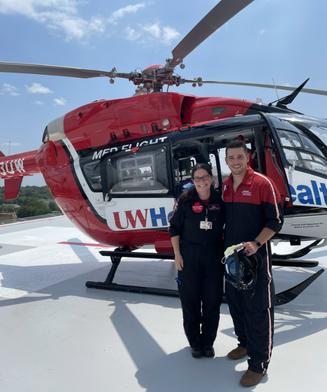
This list is not exhaustive! Below are some of our most popular electives, including several interdisciplinary experiences.
Advanced Subspecialty Can be taken for any subspecialty in 2nd/3rd years
Breastfeeding Medicine
Cardiovascular ICU
Child Protection
Child Psychiatry
Complex Care
Ethics
Musculoskeletal
Outpatient Heme/Onc
Outpatient Pulmonology
Palliative Care
Pediatric Dermatology
Pediatric Hospital Medicine
Pediatric Urology
Primary Care
Radiology
Research
Resident as Teacher
Rural Health
Sedation
Sleep Medicine
Make It Your Own!
Some residents have chosen to create their own electives, including experiences with POCUS, MedFlight (pictured: 2022 graduate Brady Hauser, right), and shadowing Spanish-English translators in clinic.
The Department of Pediatrics boasts a robust, long-established Division of Global Health, and a Global Health Track for residents Attending physicians within the division are national and international leaders in pediatric global health advocacy and practice, and they are committed to passing this knowledge along to traine
To foster personal and individualized growth with the goal of developing physician leaders who will have the skills, knowledge, and desire to improve the health of children worldwide.



Fundamentals of Global Health Course
Protected rotation held 2 weeks annually in the fall, including 1 week multidisciplinary and 1 week Pediatricspecific education
Small group sessions led by Global Health Chief Resident 1 evening/month
Global Health-specific PEARL 1-2 sessions/year; all residents attend Global Health simulation sessions
UW Global Health Institute Series and additional lectures (available in-person and online)
Annual UW Global Health Institute Symposium
Supplemental readings and videos, including journal club and annual book club

Global Health Fundamentals didactic session (below)
Global Health Fundamentals residents honing their skills in the Clinical Simulation Center (left, below)




Global Health Track residents complete a Global Health Elective. This experience:
Can be domestic (opportunities include Indian Health Services, immigrant clinics, adoption/travel clinics, and Plain Community-focused rural health) or international
Occurs in the PL-3 year, with planning beginning in PL-2 year Is individualized based on future career goals
Can be funded via the departmental Global Health Elective stipend and AAP International Travel Grant
Includes participation in a scholarly project during the elective
In the past two years, residents have rotated in Uganda, Guatemala, Lebanon, and the Center for Special Children in La Farge, Wisconsin.




PUBLISH (Producing Understanding in the Basics of Literature, Inquiry, and Scholarship in Healthcare) is a longitudinal, three-year pathway within the residency program that seeks to devlop trainees' expertise in schoarly work.

Working with a mentor on a project that is interesting, relevant, and doable, and that provides experience in the fundamentals of research
Meeting directly with one's mentor a minimum of 8 times/year

Attending monthly PUBLISH meetings
Residents in the PUBLISH Pathway build their scholarship expertise through introduction to core research principles exposure to varied types of scholarship engagement in structured mentorship from experienced faculty on a research project building skills to communicate and disseminate scholarly work
for didactic instruction, guided project work, and peer mentoring
Committing a minimum of one 2-week elective to deep participation in scholarly work
Participating in PUBLISH retreats

Working with a mentor toward project dissemination, including:
Abstract submission to UW's annual Pediatrics Research Week
Abstract submission to a regional or national meeting, with protected time and funding available to attend if accepted
Begin writing a manuscript
Social events like the annual picnic (above right)
The PCP (Primary Care in Pediatrics) Pathway is a longitudinal, three-year pathway within the residency program designed for residents interested in careers outpatient primary care.
Residents in the PCP Pathway
complete a minimum of 45 continuity clinics per year
participate in quarterly meetings with teaching on PCP topics participate in elective and flex opportunities targeted to primary care, including the Primary Care Elective as a PGY-3
develop a primary care QI project work with a primary care mentor

The OMM (Osteopathic Manipulative Medicine) Pathway is a longitudinal, three-year pathway in partnership with the Department of Family Medicine and Community Health. This pathway is designed for graduates of osteopathic medical schools to hone their OMT skills throughout residency.


Residents in the OMM Pathway
complete an OMT evaluation at start of intern year
complete 3-4 sessions/year in OMT clinic during PGY-2 and PGY-3 years
perform and document OMT encounters during PGY-2 and PGY-3 years
complete an osteopathic scholarly project attend statewide quarterly OMT conferences and present an evidence-based case presentation at one
participate in Madison Osteopathic Study Group sessions and journal club
Q: How do I become a part of Global Health, PUBLISH, Primary Care, and/or OMM Pathway(s)?
A: Incoming interns receive information on applying during the weeks after the Match.
Q: Can a resident participate in more than one pathway?
A: We work to accommodate dual pathway partcipation as much as possible. For scheduling purposes, we will ask residents to identify a “primary pathway.” The primary pathway designation is used to prioritize scheduling if a conflict arises.
Q: How much prior research experience do PUBLISH participatants need?
A: PUBLISH welcomes residents of all levels of expertise, from those who are dipping their toes into research for the first time to those who have participated in many previous projects! Many of the pathway activities can be tailored to an individual resident’s level of experience. Those with particularly extensive research experience may find some aspects of the pathway redundant.
Q: How is participation in the Primary Care Pathway different than the typical expectations for continuity clinic?
A: Residents in the PCP complete more clinic sessions per year, attend evening educations sessions related to primary care, dedicate their QI and academic projects to a primary-care related topic, and complete an intensive third-year elective in clinic.
Q: How do residents have time to practice OMM in their busy schedules?
A: In an effort to make sure interns can focus on adjusting to residency, most requirements for the OMM Pathway do not begin until the second year of residency. Interns are still welcome to participate if they are able, however. As seniors, residents in the OMM Pathway have the opportunity to perform OMT in continuity clinic and other clinical settings, as well as to practice their skills at any time using the residency program's OMT tables.
Emily Ruedinger, MD, MEd
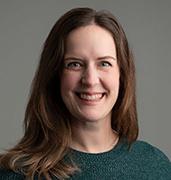
Osteopathic Manipulative Medicine Pathway


Primary Care Pathway

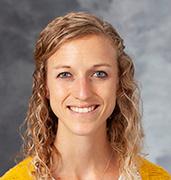

Global Health

A central part of the mission of the University of Wisconsin Department of Pediatrics is to "promote and enhances the health of children" through advocacy at the individual, local, state, and national levels. Residents have the opportunity to become deeply involved in advocacy work during their training.
PGY-1 and -3 residents spend parts of 8 weeks learning about advocacy and our community partners during the longitudinal Community Pediatrics, Advocacy, and Ambulatory Experience (CPAAX) I and II rotations We also dedicate one academic half-day (PEARL Conference) each year to teaching residents how to be effective advocates for their patients and communities. There are also various opportunities during all three years to build advocacy skills including:
interacting and working with community partners on projects learning how to use your voice as a pediatrician on social media and in news outlets
participating in health policy and legislative advocacy efforts
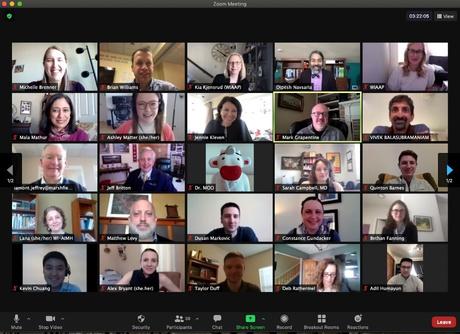
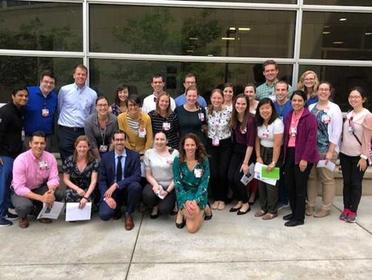

Vision: For all pediatric t advocates for all childre
Mission:

Educate residents about creating and sustaining community partnerships
Provide a framework to approach and participate in legislative advocacy
Develop advocacy-related media communication skills
Learn how to address the holistic needs of our patients, including social determinants of health
Connect residents and faculty to local advocacy opportunities in our community
CARE is open to all pediatric residents! It is a resident-led advocacy group that provides extra opportunities to learn about advocacy throughout your time in residency We strive to develop even more opportunities for advocacy training and involvement, based on resident interest and current topics. CARE meets monthly in the evening (currently online) to work on advocacy projects, discuss new opportunities, and listen to guest speakers share their advocacy experiences in their respective careers. Faculty mentors are Drs. Mala Mathur & Laura Houser.
Our residents enjoy organizing volunteer opportunities in the community Some examples include: making dinners for families staying at the Ronald McDonald House, holding a toy and book drive for Head Start programs, and educating kids with Down Syndrome and their families about various health topics at GiGi’s Playhouse Recently, residents have focused on promoting voting and creating virtual education sessions about health for local schools
Our location in the state capital gives residents the unique opportunity to advocate with legislators on a personal basis. Many residents attend the annual Doctor Day and Pediatric Advocacy Day to practice their advocacy skills. There are so many ways to connect with your state representatives to address pediatric health and promote policy change!
Current and former residents have used their voice to speak on behalf of children by writing op-eds that have been published in local news outlets Recent examples include:
"Pediatricians should screen for stress from racism" - Dr. Paige Condit (June 19, 2020) "Sex ed needs to include contraception" - Dr. Alex Wolf (July 12, 2022)






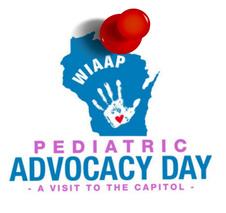

Help develop advocacy curriculum
Serve as WIAAP resident representatives
Develop advocacy scholarly projects
Serve as program liaisons to AAP for district VI and nationally
Attend AAP Legislative Conference and AAP Section on Pediatric Trainees meeting
Lead CARE
2024-2025
Lead Resident for Advocacy
Erin Kelleher, MD

2024-2025
AAP Delegate
Julia Clemens, MD

There are so many ongoing advocacy efforts within the University of Wisconsin Department of Pediatrics and the Pediatric Residency Program. Looking ahead, we hope to enhance our advocacy experience through a more centralized Advocacy Hub. This initiative will help build an infrastructure for advocacy engagement among medical students, residents, faculty, and our community partners so we can collaborate most effectively. Madison is a resource-rich area, and we hope to continue to build relationships with the community that reflect this. We look forward to continuing to educate residents to be great child advocates now and in their future careers.
Even the all-time greats – from Simone Biles to Dr. Atul Gawande – have a coach. At UW-Madison, every Pediatrics resident has one, too! Through the CORE Mentor program, every intern is paired with a faculty member who serves as a coach and mentor for all three years of residency.










CORE Mentors provide direct observation, coaching, and mentorship, as well as help with goalsetting and career advice. CORE Mentors conduct at least 2 direct clinical observations per resident each year in various settings, then offer coaching immediately or very soon after the encounter. If there’s something specific a resident would like to work on, the direct observation can be tailored to that.
CORE Mentors conduct 2 observations per year in pre-determined settings (although some residents schedule more!)
PGY-1: Inpatient Wards & Continuity Clinic
PGY-2: Specialty Clinic & ED
PGY-3: Continuity Clinic & Resident Choice
Madison has a variety of living options, and residents are able to find housing that ideally suits their needs. Some residents rent while others own, and housing ranges from apartments to single family homes. Madison's many neighborhoods have unique characteristics, allowing residents to find an area that matches their preferences. For example, some neighborhoods are well-integrated with the campus and downtown, while others are quieter and more suburban in layout.

Our residents are a diverse group of trainees from different backgrounds, both experiential and geographic. They lead varied lives outside of work. There is no 'typical resident' in our program, and we consider that a huge strength.
own a house 27.3% rent an apartment 57% rent a house, townhouse, or condo 15.7%
Percent of Current Residents Who HAVE KIDS 23% ARE FROM WISCONSIN 24%
HAD NO WISCONSIN CONNECTION BEFORE RESIDENCY 62%
ABOUT 1/4 OF RESIDENTS BIKE, WALK, OR BUS TO WORK
1 IN 4
EARNED THEIR UNDERGRAD DEGREE IN WISCONSIN
MEDICAL SCHOOL TYPE
CLASSES OF 2025-2027
ABOUT 1/3 OF RESIDENTS HAD A DIFFERENT CAREER PRIOR TO MED SCHOOL
RESIDENT MEDICAL SCHOOLS BY REGION
US MD/DO CLASSES OF 2025-2027
1 IN 4 US RESIDENTS WENT TO MED SCHOOL IN WISCONSIN

Magazines and websites consistently name Madison of the best places to live in the entire country! Our lovely city offers plenty for residents to explore in their time away from American Family Children’s Hospital There is something for everyone in Madison, including great restaurants, thriving music and theater scenes, outdoor pursuits, and Wisconsin Badgers sports. Here are just a few of our favorite activities in and near the city.



A Madison favorite, the Concerts on the Square series takes place on Wednesday nights in the summer. Concertgoers set down a blanket on the Capitol lawn and enjoy the summer evening while listening to a live performance from the Wisconsin Chamber Orchestra. Just off the Square, Overture Hall hosts Broadway productions and orchestral concerts throughout the year.
Every Saturday during the summer and fall, check out the Dane County Farmers’ Market around the Capitol Square. There are always varieties of fresh produce, flowers, baked goods, and cheeses to sample and buy. There are also farmers' markets throughout the week in neighborhoods around the city!


The Memorial Union Terrace is a great place to enjoy Lake Mendota, get some Babcock Ice Cream or a microbrew, and listen to local music. It is a Madison icon and a favorite among all of the residents Walk, drive, or paddle up to the dock!


Madison is the home to over 300 outdoor events and festivals yearly ranging from Brat Fest to the CrossFit Games How many can you make it to?
Wisconsin fans turn out by the thousands to cheer on the Badgers in football, basketball, and hockey. Camp Randall is home to “Jump Around,” one of the most well-known traditions in college football.



Picnic Point is a great place for a run, a late-night bonfire, or a beautiful view of the Capitol The trail leaves directly from the hospital parking lot and leads to a peninsula on Lake Mendota.

The arboretum has over 1,000 acres to explore, whether on foot or cross-country skis!

Less than an hour northwest of Madison, Devil's Lake offers a plethora of outdoor activities, including camping, fishing, swimming, paddling, and 29 miles of hiking trails The park draws 3 million visitors per year from all over the state and country!
The present-day city of Madison occupies ancestral Ho-Chunk land, a place their nation has called Teejop (day-JOPE) since time immemorial. We respect the inherent sovereignty of the Ho-Chunk Nation.
Madison boasts 230 craft breweries!
#1 - Best Place to Live in the US
269,840
Madison is the fastest growing city in Wisconsin, with a 16% population increase in the last decade alone.
48,0000
15,000 acres of lakes
260 public parks
#1 - Most Neighborly City in America
Neighbor com, 2023
Livability, 2021 & 2022 US News, 2022
#6 - Best Places to Live for Quality of Life ...and an overall “Happiest Place to Live”!
Outside (2023), WalletHub (2023), Men’s Health (2020)
If you don't want to spend your time stuck in traffic, Madison is the place for you! The average commute is just 20 minutes, 5 minutes less than the national average, making it 11th among the top 100 metro areas in the U.S...
12
...or hop on a bicycle and avoid auto traffic altogether! Madison is the 2nd best city in the U.S. for cycling.
While our primary goal is to train outstanding general pediatricians, our residents go on to pursue a number of career paths in both academic and non-academic settings.
CLASSES OF 2020-2024
*Includes additional residency training
**Includes urgent care
CLASSES OF 2020-2024
Our graduates matriculate into outstanding fellowship programs around the country, consistently matching into their top choices.

Our generalist graduates go on to work in a variety of practice types, including academic, private, and group practices. They are in rural, suburban, and urban areas across Wisconsin and the entire country.

Wenatchee, WA
Corvallis, OR
Eugene, OR
Butte, MT
MN
St. Paul, MN
Sioux Falls, SD
Waterloo, IA
Denver, CO
Kansas City, MO
MI

Our program is fortunate to have an incredible group of faculty members who love practicing pediatrics, teaching trainees, and living in Madison. Leading our residency program lets them do all three!
Emily
Ruedinger, MD
Associate Program Director
Practice Area: Adolescent Medicine
Residency Program Domains: Leading social justice curriculum, Education for CHANGE, and PUBLISH research pathway
Ande Jones, MD
Continuity Clinic Director
Practice Area: General Pediatrics
Residency Program Domains: Continuity clinics; co-director of Primary Care in Pediatrics (PCP) Pathway; co-rotation director for Primary Care Elective
Favorite Madison Activity: I love Art Fair on the Square, which happens annually in July!
Favorite Madison Activities: One of my favorite Madison activities is hiking. In 2021, I found a lot of hidden gems while doing all of the hikes in the book 60 Hikes Within 60 Miles of Madison! The kids were less enthusiastic about doing 60 hikes in 52 weeks than I was, but they made it through about half of them with me. I also love all things food-related, so eating at the many, many excellent restaurants in Madison and going to the farmer’s market are two of my other Madison faves!

Heidi Kloster, MD Associate Program Director
Practice Area: Complex Care/Pediatric Hospital Medicine
Residency Program Domains: Burnout prevention and wellbeing promotion; mentorship; rotation director for Ambulatory Rotation and Complex Care and Resident As Teacher electives
Favorite Madison Activities: Hiking, biking, or running around the many beautiful Madison-area trails (current fave is biking around Lake Monona and sometimes stopping for ice cream along the way ��)

Adam Bauer, MD
Associate Program Director
Practice Area: Neonatology
Residency Program Domains: Academic half-day (PEARL); social media platforms; simulation and point-ofcare ultrasound (POCUS) training
Favorite Madison Activities: I have a Madison activity for all seasons:
Winter: ice fishing
Spring: planting native plants and visiting our native prairies
Summer: going to the lakes, beaches, and any our many local breweries
Fall: apple- and pumpkin-picking


Kelly McGregory, DO
Associate Program Director
Practice Area: Child Abuse
Residency Program Domains: Director of Osteopathic
Manipulative Medicine (OMM) Pathway; rotation director for Child Protection elective; advisor for residents interested in entering private practice
Favorite Madison Activities: At the moment, I’m juggling my duties here at UW-Madison while also completing a longitudinal Child Abuse fellowship at the University of Minnesota, so I’m a bit busy for favorite activities!
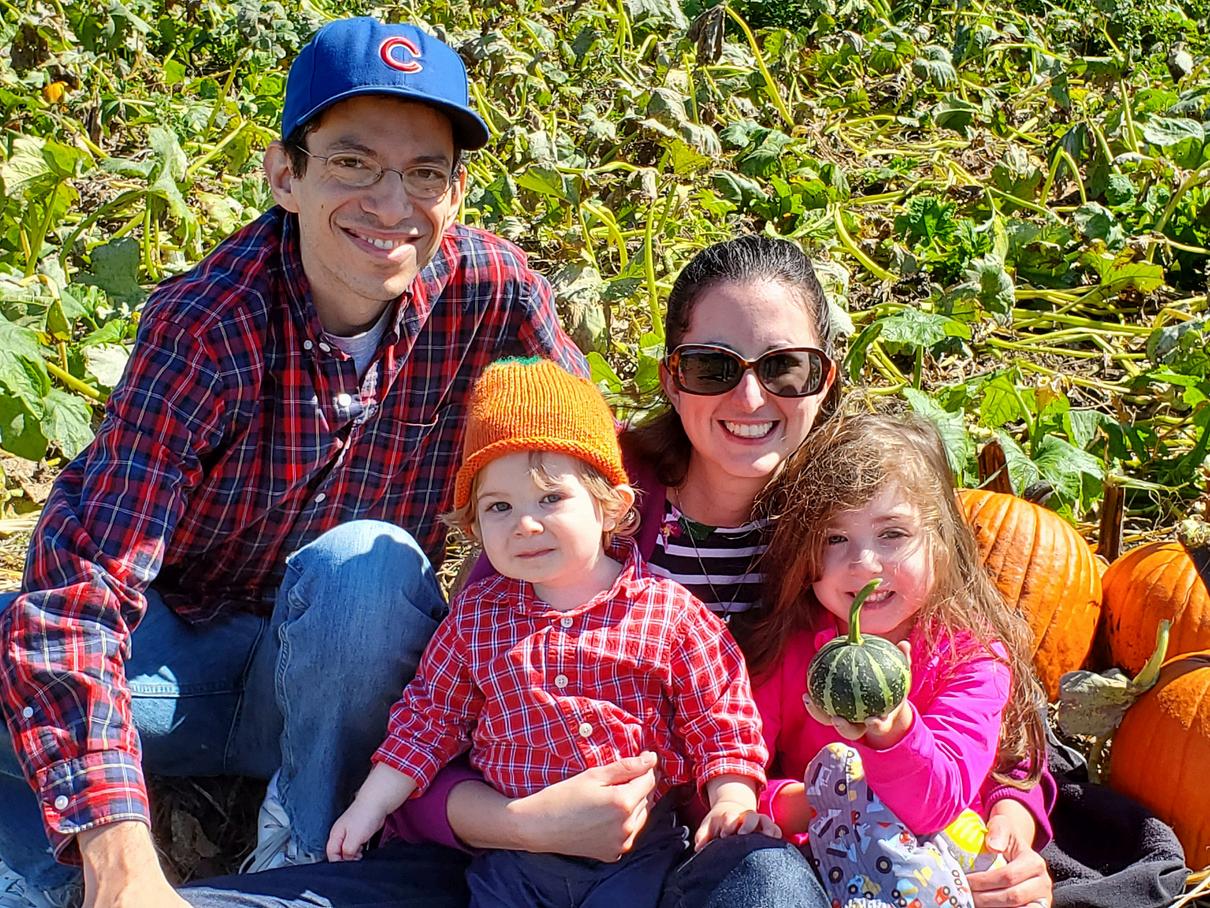
Kari Bruckner, MEd Program Manager
Favorite Madison Activities: In my free time my boys and I love being in nature - hiking, biking, paddling and downhill skiing. We enjoy going to local festivals and restaurants and walking through Olbrich Botanical Gardens. Seeing live performances at the Overture Center is another favorite. There’s so much to do in Madison!

Dan Sklansky, MD Program Director
Practice Area: Pediatric Hospital Medicine
Residency Program Domains: Program innovation; clinical curriculum; resident assessment; mentorship; frequent attending on the inpatient wards
Favorite Madison Activities: Badger basketball games, gardening, community festivals, enjoying the range of the full four seasons, and finding the best cheese curds

Brittany Loughman Program Coordinator
Favorite Madison Activities: Madison has an awesome community theatre scene, including a former movie theatre that’s now a non-profit performance space, the Bartell, where a number of local companies put on shows. In the winter, you can find me catching a performance or working backstage there. In the summer, I’m probably relaxing on a patio wherever there’s bar trivia!
• Madison is on the aboriginal homeland of the Ho-Chunk people, who call it TeeJop, meaning four lakes in the Hocak language
• In addition to the Ho-Chunk, Wisconsin is now home to another 10 federally recognized Tribal Nations, one state recognized Tribal Nation and other non-federally recognized Native American communities
• The Native American Center for Health Professions (NACHP) is located within the University of Wisconsin School of Medicine and Public Health. NACHP’s mission is to improve recruitment, retention and graduation rates of Native American health professional students and to promote health education, research and community-academic partnerships with Native communities

UW Health’s Interpreter Services provides interperters for over 400 appointments a day. An average of 18 languages are requested each day
Deer Park is the only full-scale monastic and teaching center upholding the Dalai Lama’s tradition in the Midwest
Latinx are the largest non-white/racial ethnic group in Dane County, comprising 6.3% of the population
UW Health prioritizes partnering with community organizations led by and/or specifically serving people of color or the LGBTQ community

UW Health has been named an LGBTQ leader in healthcare by the Human Rights Campaign for three consecutive years
Wisconsin has the third largest Hmong community in the nation
• UW Health’s Pediatric and Adolescent Transgender Health (PATH) Clinic provides comprehensive medical education and resources for gender-variant and transgender children and their families
Madison scored a maximum 100 on the Municipal Equality Index, rating the inclusiveness of the city’s laws, policies, and services*
55% of students in the Madison Metropolitan School District are children of color
Wisconsin has the fourth largest Amish population in the country

• UW Health offers one of the nation’s few academic gender services programs and one of the few fellowship trained surgeons in the country performing gender affirming surgeries
uwhealth.org/equity
*Municipal Equality Index 2020: A Nationwide Evaluation of Municipal Law, Human Rights Campaign Foundation and the Equality Federation Institute